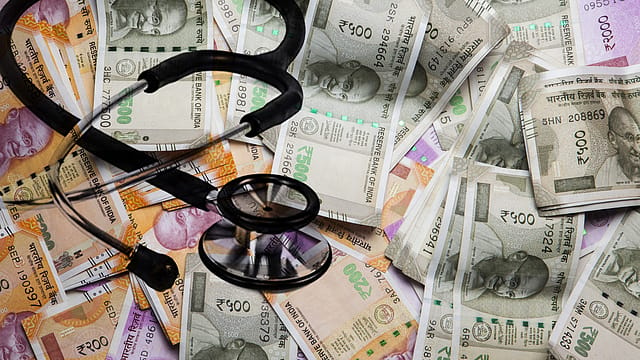Health budget hiked, last year's health infra plans yet to take off
ADVERTISEMENT

The Covid-19 pandemic ravaged the country in two severe waves last year exposing the weaknesses of India's healthcare infrastructure, especially lack of adequate primary, secondary, and tertiary care health systems. While the health ministry can take pride in successfully implementing the world's largest vaccination drive, most provisions in last year's budget for strengthening health infrastructure still remain either on paper or are still in early stages of implementation.
Though the current Union Budget has given an increased allocation of ₹83,000 crore for the health ministry (₹71,000 crore in 2021), finance minister Nirmala Sitharaman did not announce any new health infra initiatives, other than creation of a digital health system and tele-mental health infrastructure. If the FM had committed ₹35,000 crore additional funds for Covid-19 vaccination last year, the current year budget is silent on such Covid-19 provisions, considering India has vaccinated the majority of population and demand for vaccines is coming down. If the budget had provisioned ₹44,646.56 crore (actual ₹30,583.43 crore) for medical and public health in 2021, the current year estimates are only ₹39,429.62 crore. There is an increased allocation of ₹3,200 crore (₹2,663 crore) for medical research and ₹3,050 crore for the Ministry of Ayush, which was ₹2,970 crore last year.
In last year's budget, the FM had announced an outlay of ₹64,180 crore over six years under the PM Atma Nirbhar Swasth Bharat Yojana to develop capacities of primary, secondary, and tertiary care health systems, strengthen existing national institutions, and create new institutions, to cater to detection and cure of new and emerging diseases. That was in addition to the provisions under the National Health Mission. Planned interventions were support for 17,788 rural and 11,024 urban health and wellness centres, integrated public health labs in all districts and 3,382 block public health units in 11 states, critical care hospital blocks in 602 districts and 12 central institutions, strengthening of the National Centre for Disease Control (NCDC), its 5 regional branches and 20 metropolitan health surveillance units, expansion of the Integrated Health Information Portal, health infra at entry airports and seaports etc.
January 2026
Netflix, which has been in India for a decade, has successfully struck a balance between high-class premium content and pricing that attracts a range of customers. Find out how the U.S. streaming giant evolved in India, plus an exclusive interview with CEO Ted Sarandos. Also read about the Best Investments for 2026, and how rising growth and easing inflation will come in handy for finance minister Nirmala Sitharaman as she prepares Budget 2026.
A year after that budget, the progress card shows poor marks as most of these projects are still in the works or on paper. The then PM Atma Nirbhar Swasth Bharat Yojana (PM-ASBY), has now been renamed as Pradhan Mantri - Ayushman Bharat Health Infrastructure Mission (PM-ABHIM) Scheme. The PM-ABHIM was launched by the Prime Minister Narendra Modi on October 25 last year from Varanasi, Uttar Pradesh. Operational guidelines for the scheme were also released the same day. The Finance Ministry progress report on last year's budget says it has got proposals from 10 states - Andhra Pradesh, Gujarat, Telangana, J&K, UP, MP, HP, Meghalaya, Tamil Nadu and Uttarakhand and are under process for approval. MOU has been received from 10 States, five have been approved and rest are under process of approval subsequent actions. The Finance Ministry document on implementation of provisions in Budget 2021 is also silent on how many new PHCs or hospitals have taken off with funds from last year's budget.
The previous budget had proposals for setting up of a National Institution for One Health, a regional research platform for WHO Southeast Asia region, 9 Bio-Safety Level III laboratories and 4 regional National Institutes for Virology (NIV)s. The progress card says land has been identified or tied up for the 'Centre for One Health' at Nagpur and DPR is under preparation. Similarly, land has also been identified or tied up for 4 Zonal NIVs at Dibrugarh, New Chandigarh, Bengaluru and Jabalpur and MoU is being signed with the CPWD for constructions.
